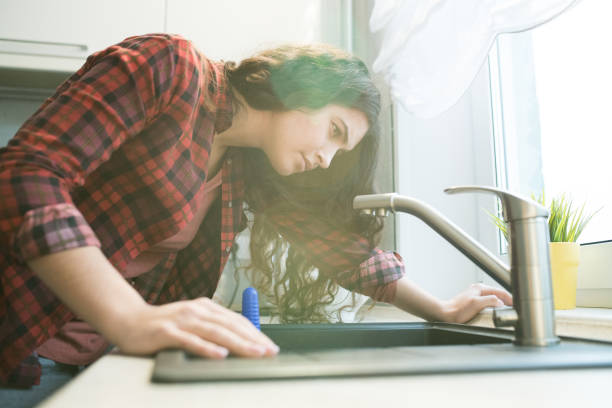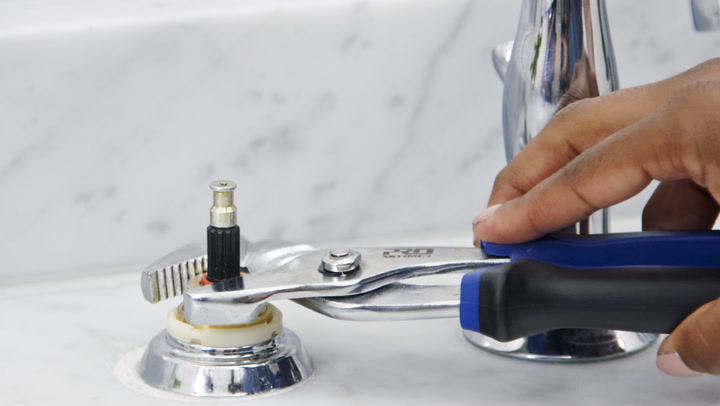The author is making a number of great points about Should I Repair or Replace a Leaky Faucet? as a whole in this great article which follows.

Trickling faucets may appear like a small inconvenience, but their effect goes beyond simply the inconvenience of the sound. From wasting water to incurring unnecessary monetary prices and wellness risks, disregarding a dripping faucet can cause various effects. In this short article, we'll look into why it's important to address this common family problem promptly and efficiently.
Wastage of Water
Ecological Impact
Dripping taps add considerably to water waste. According to the Epa (EPA), a solitary faucet trickling at one drip per second can waste more than 3,000 gallons of water per year. This not only stress water resources but additionally influences communities and wild animals depending on them.
Financial Prices
Enhanced Water Expenses
Beyond the environmental effect, leaking taps can pump up water costs substantially. The built up wastefulness in time translates right into greater utility expenditures, which can have been stayed clear of with timely repair work.
Possible Residential Or Commercial Property Damages
Additionally, extended trickling can result in harm to fixtures and surfaces bordering the faucet. Water build-up can trigger discoloration, rust, and also architectural issues if left unattended, resulting in extra fixing expenses.
Wellness Issues
Mold And Mildew and Mold Development
The constant existence of wetness from a leaking faucet produces a perfect setting for mold and mildew growth. These fungi not just compromise interior air quality yet additionally present health dangers, particularly for individuals with breathing problems or allergies.
Waterborne Conditions
Stationary water in trickling faucets can end up being a breeding ground for bacteria and other virus, enhancing the risk of waterborne conditions. Impurities such as Legionella microorganisms flourish in stationary water, possibly leading to severe ailments when ingested or breathed in.
Do it yourself vs. Specialist Fixing
Pros and Cons of DIY Repair Work
While some might try to deal with a leaking tap themselves, DIY repair services come with their own collection of obstacles. Without appropriate knowledge and tools, do it yourself attempts can intensify the concern or result in insufficient repair work, lengthening the issue.
Benefits of Hiring a Specialist Plumber
Employing a specialist plumber makes sure that the underlying root cause of the trickling tap is dealt with successfully. Plumbing technicians possess the knowledge and tools to diagnose and repair faucet problems effectively, conserving time and lessening the threat of further damages.
Step-by-Step Guide to Fixing a Dripping Tap
Tools Called for
Prior to trying to take care of a trickling faucet, gather the needed tools, including a flexible wrench, screwdrivers, substitute components (such as washers or cartridges), and plumber's tape.
Usual Tap Issues and Their Solutions
Determine the kind of tap and the details problem causing the drip. Usual issues include damaged washing machines, corroded shutoff seats, or faulty O-rings. Describe manufacturer instructions or on the internet tutorials for step-by-step support on fixings.
Preventive Measures
Normal Maintenance Tips
To avoid dripping taps, perform routine upkeep such as cleansing aerators, checking for leaks, and replacing worn-out parts immediately. Additionally, take into consideration mounting water-saving tools or upgrading to a lot more reliable fixtures.
Value of Prompt Fixes
Resolving trickling taps as quickly as they're noticed avoids additional water wastage and possible damage, eventually saving both water and cash in the long run.
Influence On Property Value
Understanding of Well-Maintained Residential Property
Keeping a residential or commercial property in good condition, consisting of addressing maintenance problems like dripping taps, boosts its regarded worth and desirability amongst prospective purchasers or renters.
Influence on Resale Value
Residences with well-maintained plumbing fixtures, consisting of faucets, command higher resale worths in the property market. Resolving trickling faucets can contribute to a favorable impact throughout residential property examinations and settlements.
Environmental Responsibility
Private Contribution to Preservation
Taking duty for dealing with trickling faucets aligns with broader initiatives toward water preservation and environmental sustainability. Every person's actions collectively make a considerable impact on preserving precious resources.
Sustainable Living Practices
By focusing on timely repairs and taking on water-saving practices, people contribute to sustainable living methods that profit both present and future generations.
Verdict
Addressing a leaking tap goes beyond plain convenience; it's an important step towards conserving water, minimizing economic expenses, and guarding health and wellness and residential or commercial property. Whether with DIY repair services or professional aid, acting to repair trickling taps is a tiny yet impactful way to promote accountable stewardship of resources and contribute to a healthier, extra sustainable future.
How to Fix a Dripping or Leaky Faucet
A leaking faucet is one of the most common problems that homeowners encounter, but it being commonplace doesn’t make it any less annoying. The constant drip drip drip of a leaking bathtub faucet, showerhead, or sink tap can disturb your home’s serenity. Left neglected, a dripping faucet can also result in higher water bills and discoloration or mold growth in your sink or plumbing fixtures.
Fortunately, you don’t have to be a trained plumber to know how to stop a dripping faucet. With some basic tools, replacement parts, and a little patience, leaky faucet repair is a breeze. In this article, we’ll explain what causes dripping faucets and how you can fix them.
What Causes a Leaking Faucet?
Kitchen and bathroom faucets come in all manner of designs, but most involve some combination of valves, O-rings, seals, and washers. The O-ring is usually the weakest link, but any one of these pieces can wear down over time. Heat, moisture, temperature fluctuations, minerals, mold, and movement can contribute to warping and corrosion, breaking the watertight seal. This just comes with the territory of being a homeowner. Everything is always subject to wear and tear, and some component parts of your appliances and fixtures need to be replaced on occasion. At least replacement O-rings are cheap!
More rarely, dripping faucets can be a symptom of excessively high water pressure. Were this the case in your home, you would probably notice that the leak is not isolated to one faucet. Water pressure issues are harder to resolve on your own. We recommend contacting a professional plumber if you suspect your water pressure is too high.
How to Fix a Dripping Faucet
- Pipe wrench or monkey wrench
- Allen wrench set
- Screwdrivers
- Old towel or rag
Shut off the water.
Before you do anything, you need to turn off the water to keep from drenching your kitchen or bathroom. You should find a valve under the sink and against the wall. Once you’ve turned this valve, try turning the faucet on to confirm that the water source has been cut off.
If you can’t locate your local valve for the faucet you’re working on, you can always shut off the water to the house at the main valve. Of course, this will prohibit anyone from using the sinks, showers, or toilets while you’re working on the faucet that’s giving you trouble.
Plug or block the drain.
You’ll be disassembling the faucet and removing some small bits of hardware. Plug the drain with a stopper or rag to avoid the possibility of a small screw falling into your P-trap.
Take apart the faucet assembly.
There are several varieties of kitchen and bathroom faucets, each with its own manner of assembly. For detailed instructions on how to disassemble your faucet, you can refer to the fixture’s manual or contact the manufacturer. If you know whether you have a ball, disc, cartridge, or compression faucet, you can find detailed schematics online.
In general, you need to begin by removing the faucet handles. You might notice a small screw that you’ll need to remove with a screwdriver or Allen wrench. If you don’t see any visible securing hardware, it’s likely hidden under a decorative cap that can be unscrewed or popped off with flathead screwdriver.
Remove each piece methodically, consulting a schematic when necessary. Take notes or arrange the pieces in such a way to make it easier to correctly reassemble the faucet later.
Remove the cartridge.
Once you’ve removed the handles and securing hardware, you should be able to remove the valve cartridge or stem. Some cartridges will slide right out. Other faucet models will require you to loosen a nut with a pipe wrench before you can remove the valve stem.
Examine the exposed hardware.
With the cartridge or stem removed, inspect the component parts. Check the rubber O-rings for wear and tear. Also examine the seat washer for corrosion or other damage. These pieces are usually the responsible parties for a dripping faucet, but it’s worth inspecting the other component parts while you have the faucet disassembled.
Find replacement parts.
Once you’ve identified which faucet component has failed, find an identical replacement. Your local hardware store should have O-rings, seat washers, and other standard components in stock. If you have a luxury or uncommon faucet, you may have to contact the manufacturer for a replacement part.
It’s a good idea to take your old parts with you to the hardware store so you can compare them with the store’s inventory and be sure you’re purchasing the correct replacement.
Reassemble the faucet.
With your new parts in hand, reconstruct the faucet and handles. Don’t be tempted to overtighten screws or nuts. You might think this could create a better seal, but it can instead damage or bend a delicate part of the assembly and create a new problem for you.
Turn on the water and test the faucet.
The only thing left to do is test your work. Unplug the sink, turn the water back on, and try the faucet. Congratulate yourself on a job well done!
https://www.libertyhomeguard.com/how-to-fix-a-dripping-or-leaky-faucet/

Do you appreciate reading up on How to Fix a Dripping or Leaky Faucet ? Place a comment down below. We would be glad to find out your ideas about this blog entry. In hopes to see you back again in the near future. So long as you appreciated our blog posting please be sure to share it. Thanks a lot for taking the time to read it.
Comments on “Why It's Vital to Mend a Broken Faucet”